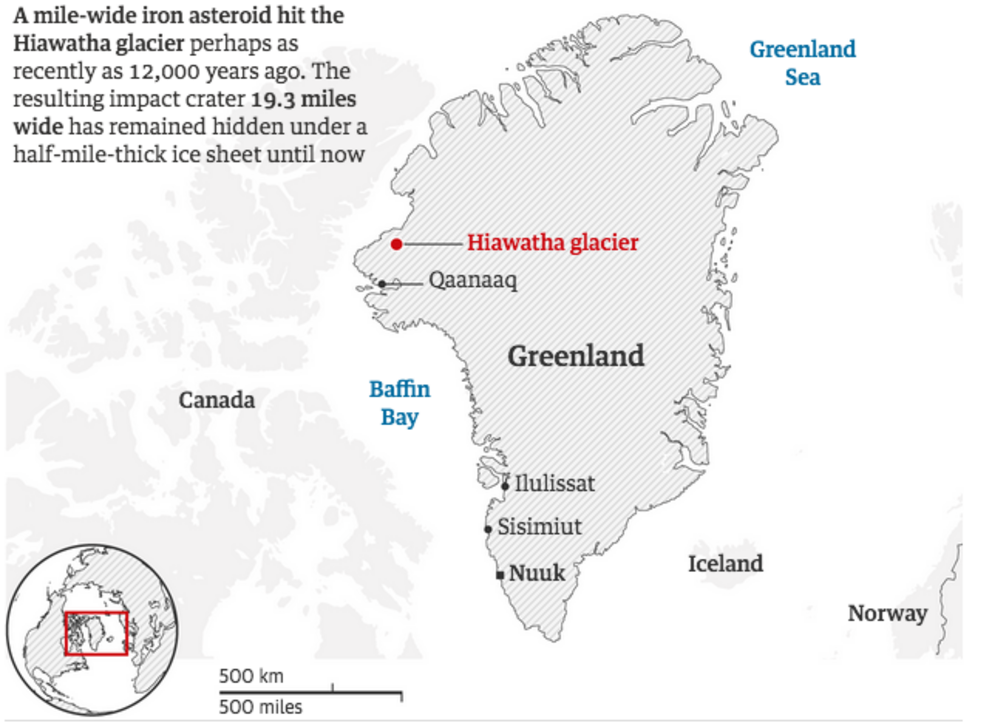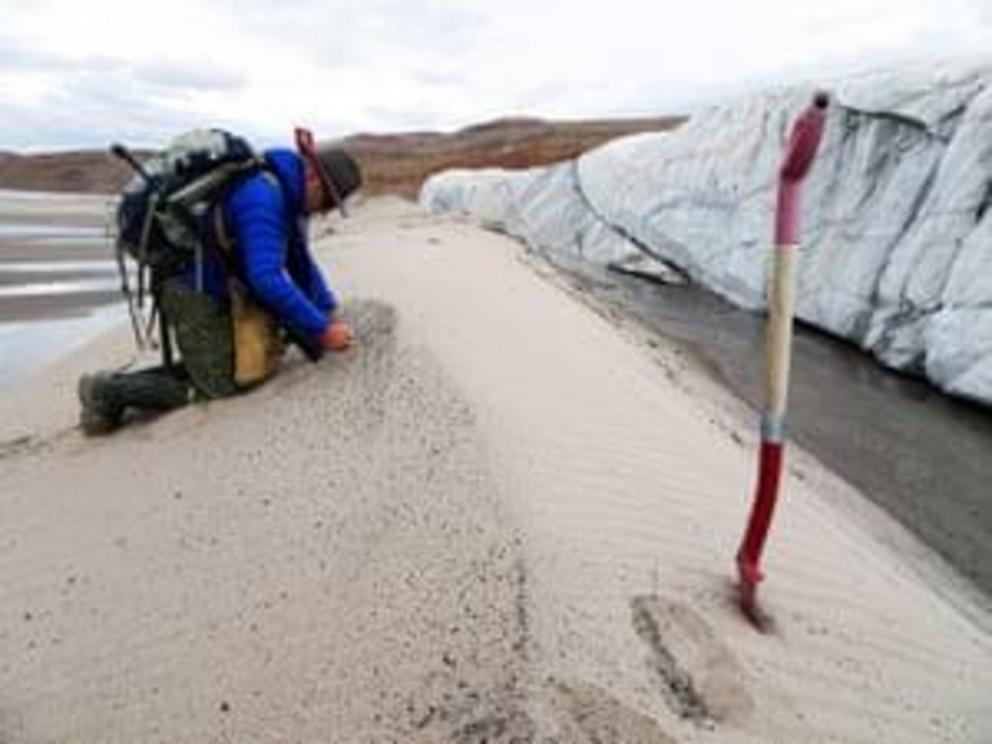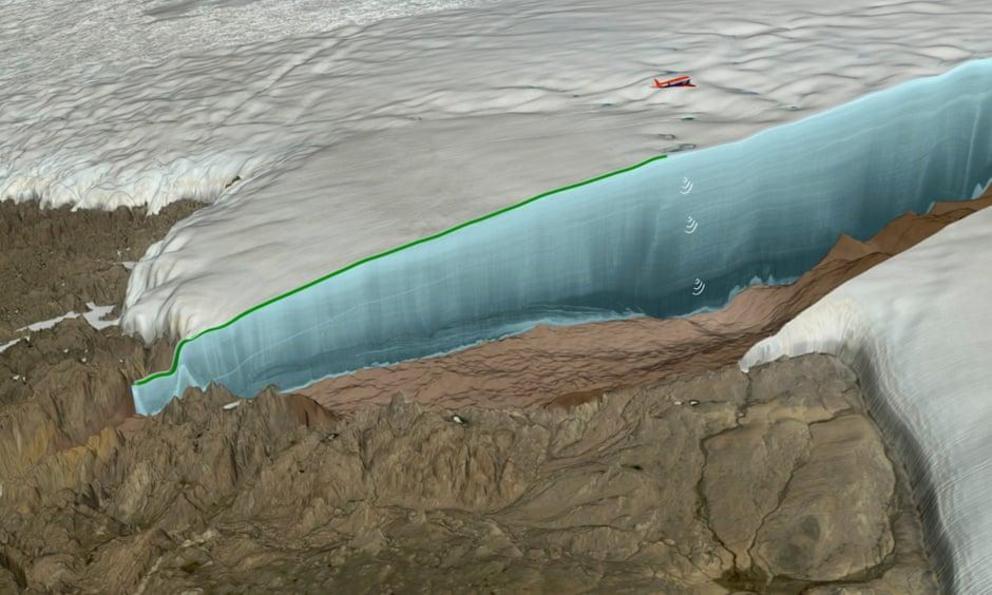Impact crater 19 miles wide found beneath Greenland glacier
Crater appears to be result of mile-wide iron meteorite just 12,000 years ago
A huge impact crater has been discovered under a half-mile-thick Greenland ice sheet.
The enormous bowl-shaped dent appears to be the result of a mile-wide iron meteorite slamming into the island at a speed of 12 miles per second as recently as 12,000 years ago.
The impact of the 10bn-tonne space rock would have unleashed 47m times the energy of the Little Boy nuclear bomb dropped on Hiroshima in 1945. It would have melted vast amounts of ice, sending freshwater rushing into the oceans, and blasted rocky debris high into the atmosphere.

At 19.3 miles wide, the crater ranks among the 25 largest known on Earth and is the first to be found beneath an ice sheet.
“You have to go back 40 million years to find a crater of the same size, so this is a rare, rare occurrence in Earth’s history,” said Kurt Kjær, of the Natural History Museum of Denmark in Copenhagen.
Scientists first suspected a crater in 2015 when they spotted a huge depression in Nasa radar images of the bedrock beneath the Hiawatha glacier in north-west Greenland. Kjær, who passes a 20-tonne meteorite to reach his office every day, wondered if such a space rock might be the culprit. “It all snowballed from there,” said Joseph MacGregor, a senior scientist on the team at Nasa’s Goddard Space Flight Center in Maryland.

Kurt Kjær collecting sand samples at the front of Hiawatha glacier. Photograph: Svend Funder/Centre for GeoGenetics/Natural History Museum
It so happened that researchers at the Alfred Wegener Institute in Germany were about to test a powerful new ice-penetrating radar system that was operated from the air. In May 2016 the scientists flew over the Hiawatha glacier and used the radar to map the underlying rock in unparalleled detail.
The images revealed all the hallmarks of an impact crater. “It became very clear that this was a circular feature with a rim around it and an elevated central region,” said Kjær. The basin itself was more than 300 metres deep, according to a report in the journal Science Advances.
To search for solid proof of an impact, the researchers flew out to the glacier and collected sediments that had washed from the crater on to a nearby floodplain. Among the gathered grains, the scientists found particles of shocked quartz and other materials that are typically produced by the violence of a extraterrestrial impact. Geochemical tests of the grains suggest the meteorite was made of iron.
So far it has been impossible to put a firm age on the crater, but its condition suggests it formed after ice began to cover Greenland about 3 million years ago. But the crater may have formed much more recently. The radar images show that while the surface layers of the glacier immediately above the crater look normal, deeper layers that are older than 12,000 years are badly deformed and strewn with rocks, with some lumps as big as trucks.
“When it happened is the $64,000 question,” said MacGregor. For a final answer, the researchers will need to drill through half a mile of ice and collect crater material for dating, or wait for rocks from the impact basin to be brought to the surface as the glacier flows to the sea. Either way, the scientists have a wait on their hands.
“We live on a planet where you can survey anything and you think you know everything,” said Kjær. “But when you see such a big thing as this hiding in plain sight, you realise that the age of discovery is not over yet.”

